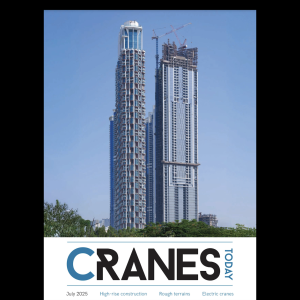The US-based firm has won a subcontract to supply the main cranes system (MCS) to be used within the New Safe Confinement (NSC) at the construction site, unit 4 of the Chernobyl nuclear power plant in Ukraine.
PaR Systems are set to design the MCS, as well as taking responsibility for the site supervision of the crane system erection. The design, fabrication and testing by the firm will take place at the firm’s subsidiary, Ederer, in Seattle.
The MCS, which includes two 55USt trolley hoists, integrates overhead crane bridges, trolleys, and a remote control and video monitoring system for operation in a radioactive area. The NSC building will house the MCS, allowing the dismantling and cleanup of the site in a controlled environment.
The NSC will be an arch structure, built next to the damaged reactor building, then slid into position to environmentally isolate the unit as future operations continue. The structure is set to confine the plant for 100 years.
A mobile tool platform (MTP) will hold a third trolley with a RoboCrane technology, licensed to PaR, developed at the US National Institute of Standards and Technology (NIST).
The MTP will also house a Modular Suspended Manipulator (MSM), also developed at NIST. The MTP is a device using three sets of paired winches to suspend and manipulate a platform with six degrees of freedom: lateral, longitudinal, vertical, roll, pitch and yaw.
PaR will subjoin a number of multifunction tools to the MSM, including: high power vacuum system, closed-circuit television viewing system, shear, robotic arm, jackhammer and drill; all of which will be remotely operated.
The NSC at Chernobyl was contracted to French firm, Novarka consortium, made up of Vinci Construction Grands Projets S.A.S and Bouygues Travaux Publics S.A., in 2007.
Since 1961, PaR has specialised in the design and supply of remote handling and automated systems for high radiation, high temperature, inert gas, and vacuum operations.
The Chernobyl regeneration project is funded by 29 donor countries through the Chernobyl Shelter Fund.






